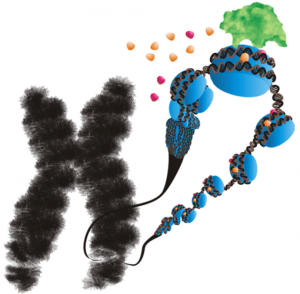
Figure 1: Fragile X Syndrome is a rare genetic disease that causes developmental problems like cognitive deficits and developmental problems. People afflicted can also have physical abnormalities, like flat feet and prominent jawlines and foreheads [2]. Image Source: Wikimedia Commons
One of the main goals of human geneticists is to identify DNA sequences that cause or influence the progression of genetic disease. In recent years, geneticists have made tremendous advances in understanding genetic diseases like Fragile X Syndrome (see Figure 1 for more information) [1]. New advances in research technologies that detect genetic diseases have also been made, including the creation of an algorithm that studies patient’s faces to find genetic diseases [3]. As the field rapidly changes, it becomes increasingly important to have a good baseline of the history of human genetic disease in order to both understand the implications of new findings and to make sure that discoveries are not repeated. A recent review paper published in Nature addresses this issue by presenting a comprehensive overview of the field, including new technologies and discussions of challenges that researchers in the field still face [4].
Historically, researchers have laid a large emphasis on studying rare, monogenetic (single-gene) diseases; common techniques used to map disease genes included linkage analysis (a tool to find the chromosomal locations of disease genes) and mapping of multiplex pedigrees. These were difficult and time-consuming processes, but despite their difficulty, researchers had characterized about 1/7th of an estimated 7,000 single-gene inherited diseases by the 1990s. The completion of the human genome project in 2003 meant that most of the human genome had been mapped, although some sections could not be mapped entirely. This accomplishment significantly boosted the speed of progress in the field of human genetics, allowing the discovery of thousands of new disease genes [4].
But linkage analysis techniques, successful with rare genetic diseases, are less useful for studying more common, late-onset genetic diseases (like asthma, depression, and diabetes), as these diseases tend to be much more genetically complex. Instead, characterization of genomic variation through projects like the HapMap Consortium (a project completed in 2009 that created a haplotype map of common patterns of genetic variation) allowed researchers to determine the allelic structure of the genome, making many studies of diseases like inflammatory bowel disease and acute macular degeneration possible [4].
Despite all the advances made in recent years, there are several issues that impede further progress in the field. One of the biggest problems is that it is still difficult to establish variants within different genes that cause diseases; in other words, while scientists may be able to tie a particular genomic sequence to a specific disease, that sequence may exhibit many different alterations to the normal pattern of DNA. Scientists are still unsure of how these alternations impact the onset and progression of the disease. A broader problem is division within the research community as to what the focus of genetic research should be: should scientists be spending more time understanding rare, monogenetic diseases that affect less of the population but are easier to understand, or should they study instead more common diseases? This question of priority is a difficult one that science alone does not have the capacity to resolve [4].
References:
[1] Hagerman, R. (1 September, 2019) “Recent Trials for Fragile X Syndrome Offer Hope.” TheScientist. Retrieved from https://www.the-scientist.com/magazine-issue/recent-trials-for-fragile-x-syndrome-offer-hope-66305
[2] Fragile X syndrome. (n.d.) NIH Genetics Home Reference. Retrieved from https://ghr.nlm.nih.gov/condition/fragile-x-syndrome
[3] Offord, C. (8 January, 2019). “AI App Identifies Rare Genetic Disorders from Photos of Patients’ Faces.” TheScientist. Retrieved from https://www.the-scientist.com/news-opinion/ai-app-identifies-rare-genetic-disorders-from-photos-of-patient-faces-65295
[4] Claussnitzer, M., Cho, J.H., Collins, R. et al. (2020) A brief history of human disease genetics. Nature 577, 179–189. Retrieved from: https://doi.org/10.1038/s41586-019-1879-7

Leave a Reply